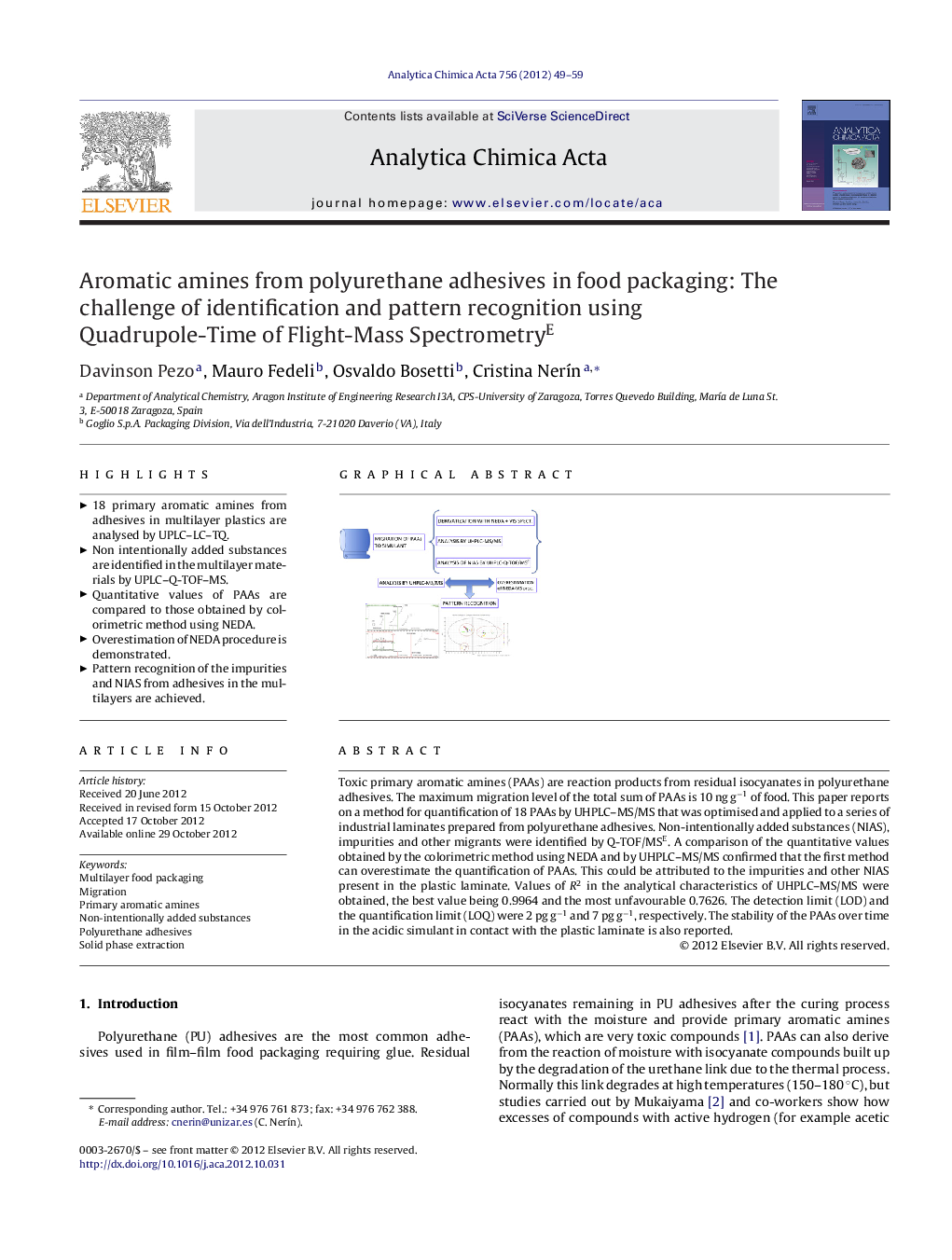| Article ID | Journal | Published Year | Pages | File Type |
|---|---|---|---|---|
| 1165726 | Analytica Chimica Acta | 2012 | 11 Pages |
Toxic primary aromatic amines (PAAs) are reaction products from residual isocyanates in polyurethane adhesives. The maximum migration level of the total sum of PAAs is 10 ng g−1 of food. This paper reports on a method for quantification of 18 PAAs by UHPLC–MS/MS that was optimised and applied to a series of industrial laminates prepared from polyurethane adhesives. Non-intentionally added substances (NIAS), impurities and other migrants were identified by Q-TOF/MSE. A comparison of the quantitative values obtained by the colorimetric method using NEDA and by UHPLC–MS/MS confirmed that the first method can overestimate the quantification of PAAs. This could be attributed to the impurities and other NIAS present in the plastic laminate. Values of R2 in the analytical characteristics of UHPLC–MS/MS were obtained, the best value being 0.9964 and the most unfavourable 0.7626. The detection limit (LOD) and the quantification limit (LOQ) were 2 pg g−1 and 7 pg g−1, respectively. The stability of the PAAs over time in the acidic simulant in contact with the plastic laminate is also reported.
Graphical abstractFigure optionsDownload full-size imageDownload as PowerPoint slideHighlights► 18 primary aromatic amines from adhesives in multilayer plastics are analysed by UPLC–LC–TQ. ► Non intentionally added substances are identified in the multilayer materials by UPLC–Q-TOF–MS. ► Quantitative values of PAAs are compared to those obtained by colorimetric method using NEDA. ► Overestimation of NEDA procedure is demonstrated. ► Pattern recognition of the impurities and NIAS from adhesives in the multilayers are achieved.
